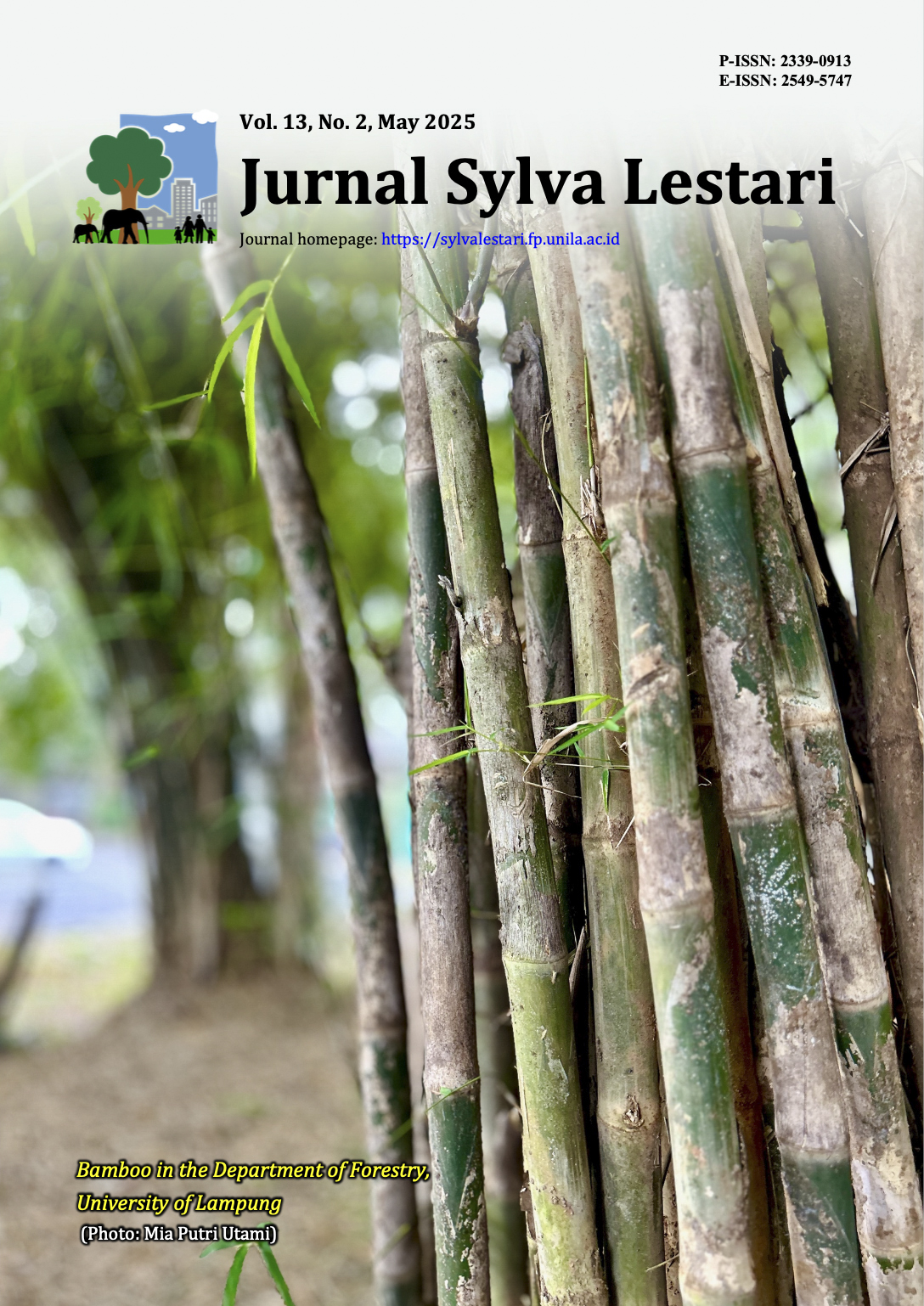Growth Performance of Selected Bamboos in Secondary Forest and Riparian Ecosystems under Different Silvicultural Treatments
DOI:
https://doi.org/10.23960/jsl.v13i2.1091Abstract
This study was conducted in Nueva Vizcaya to evaluate the growth performance of two economically important erect bamboo species, Bambusa vulgaris and Bambusa spinosa, in secondary forest and riparian ecosystems under different silvicultural treatments. A factorial experiment was arranged in a Randomized Complete Block Design (RCBD) with three silvicultural treatments and three sampling plots. Each sampling plot contained 36 plantlets (18 B. spinosa and 18 B. vulgaris) for both ecosystem types. The field study lasted six months, with data collected biweekly. Growth parameters measured included percent survival, average height (cm), average diameter (mm), and number of shoots. Data were analyzed using repeated measures ANOVA in MINITAB and summarized with Excel pivot tables. The results revealed significant effects of silvicultural treatments and plot location on growth parameters. B. vulgaris exhibited more shoots than B. spinosa in the secondary forest. Ring weeding and cultivation (C2) resulted in a significantly higher number of shoots (1.85), followed by ring weeding with no cultivation (1.83), albeit fewer and shorter than those under no weeding and cultivation (1.72). Silvicultural management showed no significant correlation with other variables. A positive correlation between light intensity and growth was observed, with the highest correlation occurring at 4 pm. This pioneering study provides baseline data for monitoring the growth and performance of these bamboo species across distinct ecosystems. By offering comprehensive insights into their growth patterns and adaptability, the findings could inform sustainable management practices and conservation strategies for bamboo resources under varying environmental conditions.
Keywords: Bambusa spinosa, Bambusa vulgaris, riparian, secondary forest, silvicultural treatments
Downloads
Downloads
Published
How to Cite
Issue
Section
Statistics
 Abstract views: 565 times
Abstract views: 565 times PDF downloaded: 431 times
PDF downloaded: 431 times
Metrics
License
Copyright (c) 2025 Lorena Pioquinto-Laguardia, Ireneo Latunio Lit Jr., Merdelyn Caasi Lit

This work is licensed under a Creative Commons Attribution-NonCommercial 4.0 International License.
Authors retain copyright and grant the journal right of first publication with the work simultaneously licensed under a Creative Commons Attribution-NonCommercial 4.0 Licence that allows others to share the work with an acknowledgement of the work's authorship and initial publication in this journal.
Authors are able to enter into separate, additional contractual arrangements for the non-exclusive distribution of the journal's published version of the work (e.g., post it to an institutional repository or publish it in a book), with an acknowledgement of its initial publication in this journal.
Authors are permitted and encouraged to post their work online (e.g., in institutional repositories or on their website) prior to and during the submission process, as it can lead to productive exchanges, as well as earlier and greater citation of published work (See The Effect of Open Access).









